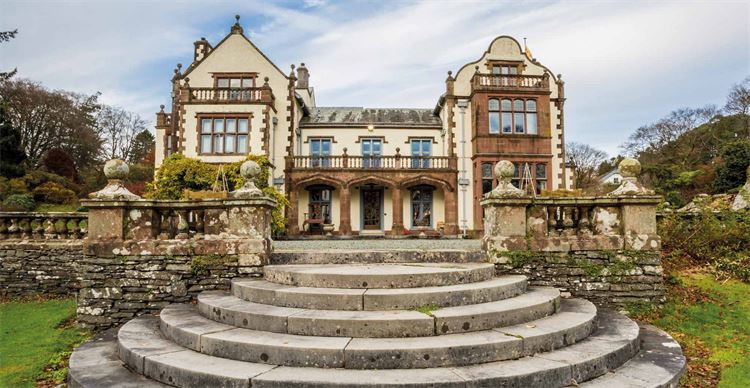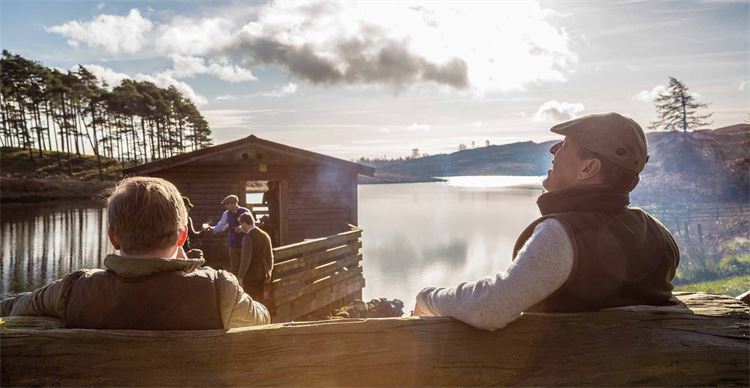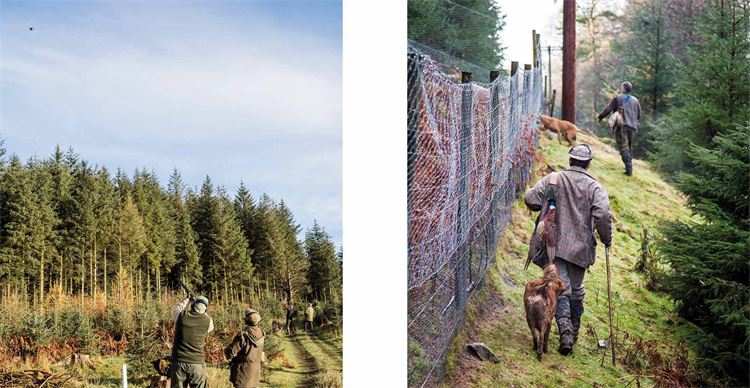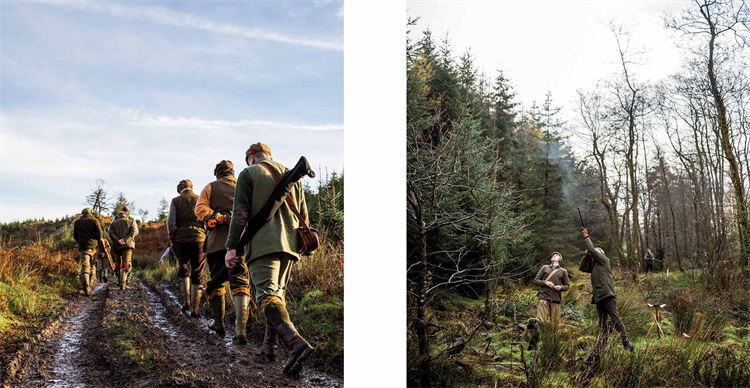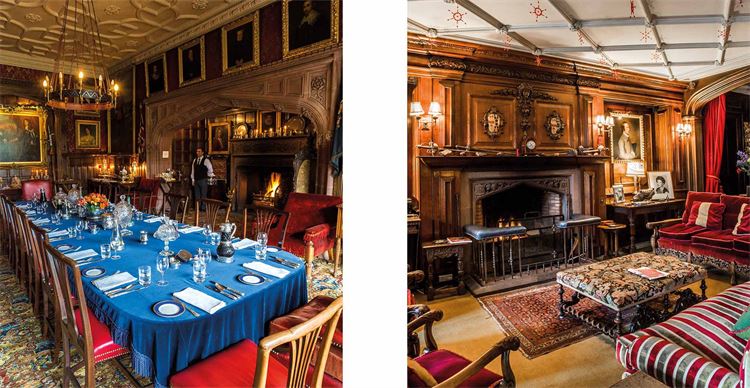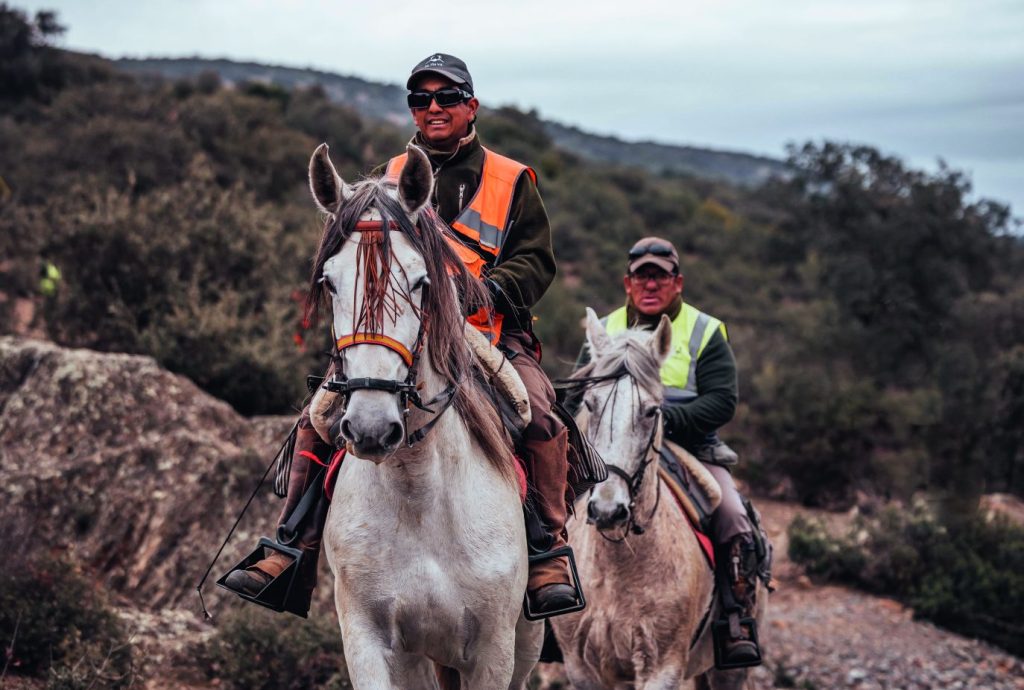Graythwaite Hall
The Graythwaite Shoot in the Lake District is back, and it has everything going for it.
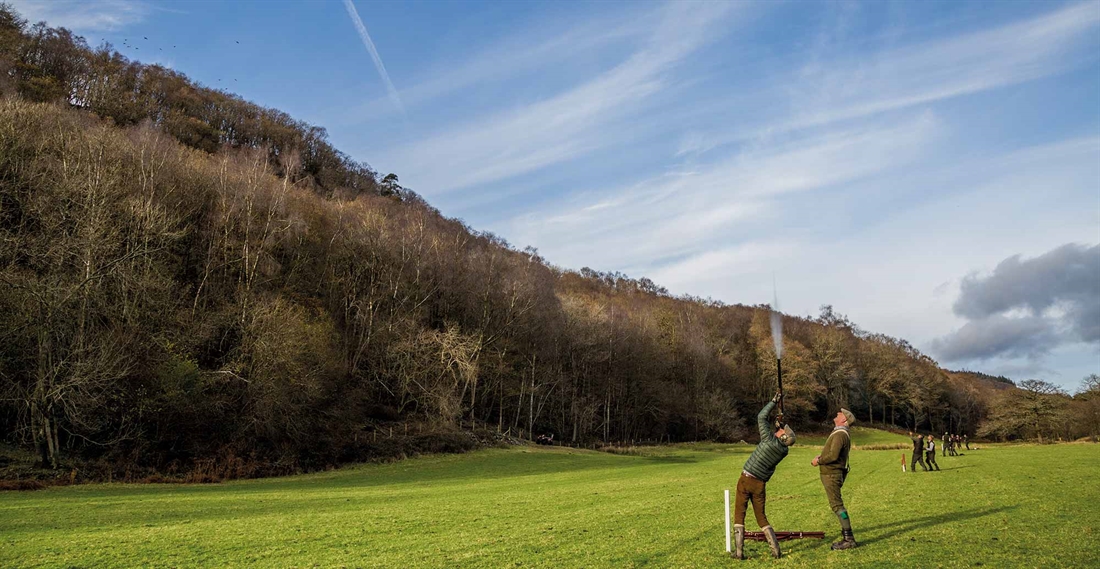
There is something quite special about crunching your way across a gravel courtyard towards the entrance of a country manor house. As you take each step closer to the heavy main doors, you can’t help but think of the rich history behind them and wonder whose footsteps from bygone years you may be retracing.
This is precisely how a day at the Graythwaite Shoot in the Lake District started for me back in November. The beautiful Graythwaite Hall was constructed in the 17th century by order of Christopher Sandys, and later refaced in 1840 to take on the appearance of a Gothic manor. The Graythwaite estate, which takes in some 5,500 acres, has been passed down through a long line of descendants, and today’s residents – whose roots go back to the Archbishop of York, Edwin Sandys (1519–1588) – are quite possibly one of the keenest shooting and fishing families you will ever meet.
I was welcomed into the Hall by Sasha the shoot-day butler, and immediately I sensed the quaint nature of the place. One might liken it to the set from Pride & Prejudice. Indeed little has changed since the 1840 remodelling; stunning collections of antiques and memorabilia are on display, and original oil portraits of ancestors hang in lavish gilt frames on the crimson walls throughout.
When the house was constructed, not a thought would have been given to its suitability as the headquarters for an estate with a driven pheasant shoot, but by accident it is very well-placed as such. In fact, it wasn’t until the late 1960s that the first pheasants were reared for shooting on the estate for Major Mervyn Sandys, who hosted small 40–50-bird days simply to entertain friends and family.
A lot has changed since then, though, and when the estate was inherited by Mervyn’s eldest son Myles in the mid ’80s, the shoot grew organically to a point where let days could be sold. More birds were reared on-site, new drives were introduced, and Graythwaite started to make a name for itself.
For the following 30 years, the shoot continued to expand and excel under the guidance of headkeeper Ronnie Parish, who ensured that the demand was successfully catered for.
However, in the early 2000s, all was about to change. “Around the time the keeper retired we started to notice small changes in the shoot,” says George Sandys (30), Myles’ middle son. “There were signs of disease amongst the birds, and a lot of de-forestation and planting of young trees was taking place which changed the topography of the land, and as a result we found it more difficult to present good birds.
“For the next six years it continued to worsen at an alarming rate as we struggled to maintain what was once enjoyed.
“We reached a point where our loyal clients – including a group of Belgian Guns who flew over regularly – were not getting the quality of shooting they had paid for, and, understandably, this was very upsetting and hugely stressful for my parents.”
Consequently, the family made a unanimous decision to have an eight-year hiatus on all shooting operations on the estate, knowing that this would allow sufficient time for the land where the pens were placed to rest and rejuvenate, and the young trees to mature enough to hold birds. “Whenever we felt it was time to restart our family shoot, we would go back to it with a different and more sustainable approach,” added George.
And so, eight years on, driven shooting returned to Graythwaite, and I was lucky enough to be invited to cover the fourth day of their first season back – joining a team of Guns comprising many of the loyal Belgian clients who enjoyed shooting at Graythwaite in the past.
A fresh start
“It has taken a huge amount of work and significant investment of time and money to get the shoot back up and running,” explained George as we climbed into his truck to set off for the first drive. “The eight-year break has been great for recovery, but the vegetation became very overgrown, to a point where it was not particularly beneficial to gamebirds. Some species like roe deer continue to do well, though – we perservered with deer management throughout our break. But without strict vermin control, less favourable species also began to flourish.”
Having appointed Steven Campbell to take on the mammoth role as headkeeper – who is both young and enthusiastic, with experience gained during his time at Glamis Castle as underkeeper – the family have already started to see vast improvements, great promise and a sustainable future.
Apart from designing nine new drives (there are 11 in total) on the 4,000-acre area that is shot over, the bulk of the work conducted before the season has included selectively thinning woodland, clearing out new rides for beaters and pheasant feeding, and creating flushing points and new release pens. “We have been relatively hot on foxes, too,” added George. “This has benefitted many types of flora and fauna.”
They have continued with two of the original drives; both of which would feature on the day I visited – including the signature drive which was to be shot last.
“The number of pheasants put down this year reflects a sustainable figure to provide 12 250-bird days. This season, six days were given to the Belgian team and I have let a further six. I hope to increase this by six days, and no more. When we were a larger operation we hosted 30 days a season and aimed for bags of 250 birds, but we have no desire to do this again.”
The first drive, which was positioned at the bottom of a steep conifer-lined valley, is a new one for Graythwaite and so flexibility and experimentation have been key. “We tried this last week in the afternoon, but unfortunately the birds did not want to play ball and turned back over the beaters,” George admitted. “We think it is due to the feeding times, so we are hoping that it will work better earlier in the day.”
And indeed it did. Each of the eight Guns enjoyed plenty of shooting throughout the drive and accounted for a good number of pheasants. Only the odd bird turned back over the beaters. The smiles all around as the horn sounded at the end of the drive was evidence enough that it had worked.
“Naturally, as you’d expect with new drives, we have had some teething issues,” explained George. “And, of course, the beating and picking-up teams are still getting to know one another – many of them being new to the shoot – but we are getting there slowly and I’ve no doubt that before long the whole teamwork element will be more cohesive.” Many of the previous beating team, now in their twilight years, had retired.
The second drive, Pip Track, saw the birds pushed over tall pine trees – this time, though, the Guns would be standing in a young plantation. Here a handful of woodcock were flushed, too, but the family policy dictates that under no circumstances are they to be shot.
To speed up the day as the Belgians would be flying home in the afternoon, elevenses was postponed until after the third drive. “This is one of our remaining original drives,” Myles told me. “It always produces good pheasants, but one year we tried partridges to no avail. In fact, we flushed them once, they never returned, and we found them a week or so later in the local school playground! The school was not overly impressed,” he laughed.
One thing the Sandys have got right from the off is elevenses, which are kept light in the form of beef consommé, hot, sticky sausages and winter tipples served in the boathouse on one of the estate’s remote and private lakes. “We make sure the team is well fed at breakfast with a full English, and a big lunch after shooting,” said the youngest brother, Guy (27). “The last thing you want is to be too full from elevenses and then feel lethargic for the rest of the day.”
After a pleasant break by the water, where the team shared stories of the day so far and looked back on the Graythwaite Shoot of old, it was time to head in convoy for the final three drives – the first of which had all the right ingredients but for some reason had failed to impress so far. Here the Guns were positioned in a field below a high ridgeline interspersed with mature oaks and beech trees with the most spectacular mountainscape in the background.
And yet, as beautiful as this drive was, it didn’t work as intended. Only three people fired shots, and the birds drifted way off from where they were intended to be flushed. “We are gutted about how this drive has performed this year,” said George at the sound of the final horn. “It has a lot going for it but hasn’t gone to plan yet.
I think we will give it another couple of attempts, but if it does not improve we will have to go back to the drawing board. Many shoots are guilty of persisting with a drive, but a lot of time and resources can be wasted doing this.
“We know that we have a lot more to do, and Steven is still getting to know the ground and learning what the birds tend to do here. He can be very proud of what he has achieved so far, and the future is very exciting for us.”
The penultimate drive was followed by a glass of prosecco in antique hunting cups – a nice touch – before we moved on to the signature drive, Bottom Dale Park.
I stood on the end of the line situated in a floodplain. Three back Guns stood behind the main line of five. The valley towered above and soon enough the birds began to power over the line in a fashion which more than justified the drive’s ‘signature’ label.
I have never experienced so many cheers and applause for a keeper and his team after a day’s shooting. Maybe it was a generous team of Guns; more likely is that these loyal sportsmen, who have waited eight years to return to this stunning patch of Cumbria, can see potential that brings back special memories of being part of this great family shoot…
Post shoot
All of the game taken on the estate, including venison, is accounted for. Each of the Guns receive a case including two dressed birds wrapped in bacon accompanied by a jar of piccalilli labelled with the family crest. “I am a very strong believer in taking game home after shooting,” asserts George. “We personally eat game at least three times a week, but it is not always easy for those travelling on a plane to take game home. Therefore we have developed this method to ensure the whole process is much easier.”
Anything that the Guns do not take goes to a game dealer. “I had problems in making this work this year,” admits George. “The game dealer we used for decades before we stopped the shoot, refused to take our birds. So I have gone elsewhere to ensure that they still find a way to the table. It is so important that all shot game finds its way into the food chain. Nobody should be shooting game that won’t be eaten.”
Related Articles
Get the latest news delivered direct to your door
Subscribe to Fieldsports Journal
Elevate your experience in the field with a subscription to Fieldsports Journal, the premium publication for passionate country sports enthusiasts. This bi-monthly journal delivers unparalleled coverage of game shooting, fishing and big game across the UK and beyond.
Each issue offers a stunning collection of in-depth features, expert opinions and world-class photography, all presented in a timeless yet contemporary design.
Save 10% on shop price when you subscribe, with a choice of packages that work for you. Choose from Print & Digital or Digital only with each journal delivered directly to your door or via the app every other month, plus access to past issues with the digital back issue library.






